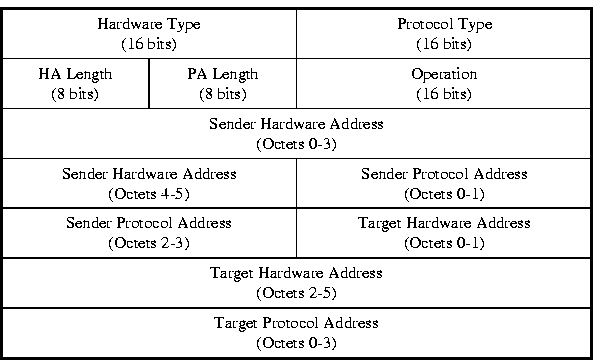| Introduction to Data Communications | ||
|---|---|---|
|
|
55. Address Resolution Protocol | Next |
The ARP cache is a dynamic cache and the information is stored only for 120 seconds. After which it is discarded. In this manner, the ARP cache remains small. The ARP cache can be viewed by using the "ARP -a" command at a command prompt. This should display the current ARP cache. If nothing is displayed, then most likely your computer hasn't communicated on the network for the past 120 seconds. Ping another device on the network and see if the ARP cache has changed.
The basic operation of ARP is as follows. When the IP layer wants to communicate with another device on the network, it checks the ARP cache to see if there is a match with an Ethernet address. If there is no matching entry in the ARP cache, an ARP broadcast datagram is sent out that basically says "Does anybody know whose Ethernet address belongs to this IP address?". The receiving station that has the IP address, responds with an ARP datagram that says "This is my IP address and here is my Ethernet address". The ARP cache is updated and the original IP layer information is then passed on to the MAC layer for processing.

ARP and RARP Protocol Data Unit
Hardware Type Physical layer hardware which the request is being made. The full listing of hardware types is given in the table titled:
Examples of hardware types are: 1 = Ethernet (10 Mb) 3 = Amateur Radio AX.25 4 = Token Ring 6 = IEEE 802 networks 11 = Localtalk Protocol Type Protocol code same as Ethernet frame Type field values. HA Length Hardware address length in octets Field lengths assume HA = 6 octets PA Length Protocol address length in octets Field lengths assume PA length = 4 octets Operation Operation code for this message 1 = ARP request 2 = ARP reply 3 = RARP request 4 = RARP reply Sender HA Sender hardware address Token Ring and Ethernet MAC addresses are 6 octets (48 bits) Sender PA Sender protocol address IP address is 4 octets (32 bits) Target HA Target hardware address Token Ring and Ethernet MAC addresses are 6 octets (48 bits) Target PA Target protocol address IP address is 4 octets (32 bits)
| Introduction to Data Communications | ||
|---|---|---|
|
|
Table of Contents | Next |